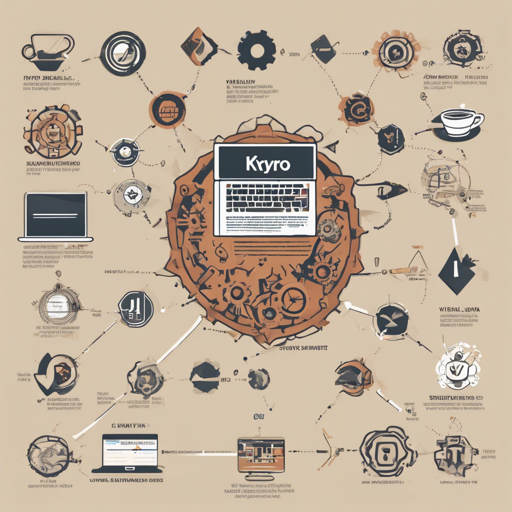Kryo is a blazing-fast serialization framework designed to serialize and deserialize Java objects efficiently. It focuses on high speed, low memory usage, and a user-friendly API, making it the go-to choice for scenarios requiring object persistence, such as saving to files, databases, or across networks.
Getting Started with Kryo
In this guide, we will walk you through the installation process, a quick start example, and some advanced configuration tips.
Installation
To get started with Kryo, you can install it in various ways:
With Maven
If you are using Maven for your project, add the following dependency to your pom.xml:
<dependency>
<groupId>com.esotericsoftware</groupId>
<artifactId>kryo</artifactId>
<version>5.6.0</version>
</dependency>Without Maven
If you prefer not to use Maven, you can manually download the Kryo JAR file and place it in your classpath along with the necessary dependencies listed in the lib directory.
Building from Source
If you wish to build Kryo from source, ensure you have JDK 11+ and Maven installed. Then run:
mvn clean installQuickstart Example
Let’s dive into a quick example to demonstrate how to use Kryo for serialization:
import com.esotericsoftware.kryo.Kryo;
import com.esotericsoftware.kryo.io.Input;
import com.esotericsoftware.kryo.io.Output;
import java.io.*;
public class HelloKryo {
static public void main(String[] args) throws Exception {
Kryo kryo = new Kryo();
kryo.register(SomeClass.class);
SomeClass object = new SomeClass();
object.value = "Hello Kryo!";
Output output = new Output(new FileOutputStream("file.bin"));
kryo.writeObject(output, object);
output.close();
Input input = new Input(new FileInputStream("file.bin"));
SomeClass object2 = kryo.readObject(input, SomeClass.class);
input.close();
System.out.println(object2.value);
}
static public class SomeClass {
String value;
}
This code snippet shows how to:
- Register your class with Kryo.
- Serialize an object to a binary file.
- Deserialize an object from the file back to its original form.
- Display the value of the deserialized object.
Understanding the Code with an Analogy
Imagine you want to send a gift to a friend, but the gift must be packed carefully to avoid damage. Serialization is like packing the gift; it takes the original object and wraps it up in a way that preserves its structure and values, ready to be sent (or stored). When your friend opens the package and unwraps the gift, that’s akin to deserialization – they are retrieving the original object in its intended state.
Troubleshooting
As with any technology, you may run into issues while working with Kryo. Here are common troubleshooting suggestions:
- If you encounter KryoException, ensure that you have registered all classes properly.
- Make sure your objects are not too deeply nested. Adjust your stack size if necessary.
- Check that you are using compatible Kryo versions for serialization and deserialization.
For more insights, updates, or to collaborate on AI development projects, stay connected with fxis.ai.
Advanced Features
Kryo offers several advanced features that can enhance your experience:
- Deep and Shallow Copies: Kryo can clone objects directly, rather than serialization to bytes.
- Serializer Framework: This allows you to create custom serializers for specific needs.
- Thread Safety: If you are working in a multi-threaded environment, consider using ThreadLocal for Kryo instances.
At fxis.ai, we believe that such advancements are crucial for the future of AI, as they enable more comprehensive and effective solutions. Our team is continually exploring new methodologies to push the envelope in artificial intelligence, ensuring that our clients benefit from the latest technological innovations.

